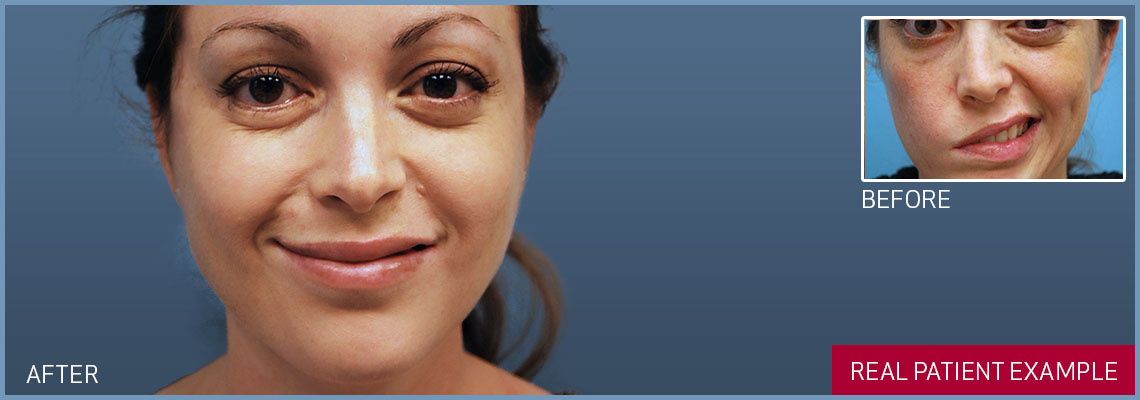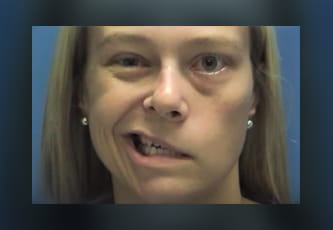Babysitter Nerve Muscle Graft

A mutually supportive relationship exists between the facial nerve and muscles of facial expression. The facial nerve branches carry the electrical signals that cause muscles to contract, producing a smile, while both tissues secrete biochemicals that support each other’s health.
Division or injury to the facial nerve therefore disrupts this important relationship and initiates a process of time-dependent muscle atrophy in which the contracting elements inside the muscle are gradually replaced by immobile scar tissue. The chemical receptors on the muscles surface progressively fade until the muscle can no longer respond to nerve signals. Approximately 18 to 24 months after trauma to the nerve, the muscle will be weak and withered. After this point, repairing the facial nerve will usually produce little or no improvement in muscle function.
In an effort to avoid irreversible muscle atrophy, nerve repairs are performed as soon as possible. If the injury to the proximal segment of the facial nerve is definite and irreversible, then reconstruction can proceed immediately. Unfortunately, the degree of nerve injury and/or the potential for spontaneous recovery are not always clear. For example, many individuals with facial weakness after Bell's palsy or acoustic neuroma excision will make a significant spontaneous recovery and a course of observation is often warranted.
The problem arises when no meaningful recovery develops and many months have elapsed. The same challenge exists for individuals who did not seek a reconstructive surgical consultation in a timely fashion after facial nerve injury.
Treatment
The goal of this treatment is to try and restore a source of innervation to the muscles of facial expression before the atrophy process has become irreversible. The Masseter nerve and the Hypoglossal nerve are in close proximity to the facial nerve. Either nerve can be connected microsurgically to the facial nerve and can begin to provide a new nerve supply within several months. These proximal nerve transfers preserve the health of the facial muscles and when used in conjunction with cross face nerve grafts are referred to as “baby sitters”.
The masseter-to-facial nerve transfer or hypoglossal-to-facial nerve transfer often produce powerful facial motion and can be used as isolated procedures. However, the facial motion created by these techniques is rarely spontaneous. The spontaneity of the reconstructed facial motion can be enhanced with cross face nerve grafts. These long grafts traverse the face and require 10 to 12 months before they begin to deliver nerve fibers to the paralyzed side.
Without the “baby sitting” nerve transfer, the clock would run out and window of opportunity to restore the facial muscles would be lost for many patients. Despite the potential for cross face nerve grafts to produce spontaneous facial motion, the degree of movement is often weak and unable to match the unaffected side. In this regard, the “baby sitter” nerve transfer is again beneficial as its strength augments the motion produced by the cross face nerve graft. The two techniques used together are complimentary and create a marriage between strength and spontaneity.
Recovery
Typically a 24 to 48 hour hospital stay is required after this procedure. Ambulation is begun on the first post-operative day and a clear liquid diet is utilized for two to three days. In the early post-operative period, patients are requested to stay on a soft diet and rinse their mouth after meals.
Exercise, heavy lifting, pressure to the cheeks and teeth brushing are all to be avoided until clearance is obtained from the operating surgeon.
Return of facial tone and motion will usually develop between the 9th and 12th post-operative month. Electrical stimulation and a home physical therapy program are frequently initiated several months after surgery. Follow-up and recovery times will vary based on the patient's case.
NERVE GRAFT BABYSITTER

Masseter-to-facial nerve "baby sitter" transfer with cross face nerve grafts.
real patient case studies
Learn how facial paralysis surgery and functional restoration can help you.
